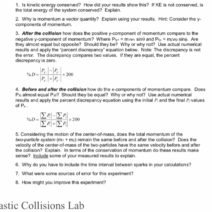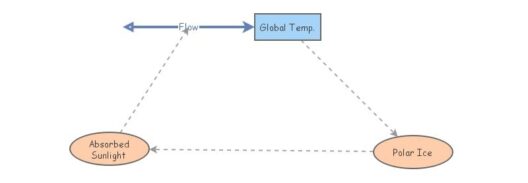Refrigerators are ubiquitous in our modern households, providing convenience by preserving perishable goods. However, beneath their essential role lies the pressing issue of energy consumption. According to various studies, refrigerators account for a significant portion of residential energy use, making energy conservation in this appliance pivotal for environmental sustainability. By understanding and implementing best practices, we can minimize their energy consumption without compromising our daily lives.
Understanding how refrigerators work reveals their intricate design and energy demands. These appliances operate through a cycle involving refrigerants, which absorb heat from inside the fridge and release it outside. This continuous process necessitates a constant energy supply. Furthermore, refrigerators vary in efficiency, depending largely on technology, model, age, and maintenance. Older models tend to consume more energy compared to newer, more efficient counterparts, which can be a crucial point of consideration when evaluating your refrigerator.
One fundamental strategy for conserving energy begins with the refrigerator’s location. Placing the refrigerator away from heat sources such as ovens or direct sunlight is imperative. Excessive heat exposure forces the appliance to work harder to maintain cool temperatures, resulting in increased energy consumption. Similar to how shade can cool a person down, keeping your refrigerator in a cooler area can lead to substantial energy savings.
Moreover, maintaining optimal temperature settings is critical. The USDA recommends keeping refrigerators at 37°F (3°C) and freezers at 0°F (-18°C). Operating the refrigerator at these temperatures ensures food safety while preventing unnecessary energy expulsion. Also, avoid frequently opening and closing the door. Each time a door opens, cold air escapes, compelling the appliance to consume additional energy to restore the internal temperature. Establishing a routine for meal planning can mitigate the impulse to rummage through the fridge unnecessarily.
Proper organization within the refrigerator can significantly enhance efficiency. Food placed in designated zones not only aids in easy access but also allows for better airflow. Avoid overcrowding, as this can obstruct air circulation, forcing the unit to work overtime. Grouping similar items together makes it easier to retrieve what you need quickly, reducing the door’s exposure time. An organized approach can truly be a game changer in energy reduction.
The role of regular maintenance in energy conservation cannot be overstated. Keeping the refrigerator coils clean is a simple yet often overlooked action that yields significant benefits. Dust and grime accumulating on the coils hinder heat exchange, causing the compressor to run longer for effective cooling. Cleaning these coils every six months can enhance performance, prolong appliance lifespan, and ultimately cut down on energy costs.
Another critical aspect of energy conservation is to conduct periodic audits of the appliance. Checking for door seals is essential; worn or damaged seals can result in cold air leakage. A simple test involves placing a piece of paper between the door and the seal. If it slips out easily, it’s time to replace them. Additionally, monitoring and adjusting the refrigerator’s temperature settings based on seasonal changes can achieve considerable energy efficiency. Warmer months may require slightly cooler settings to combat the external heat, while cooler months may allow for higher settings without jeopardizing food safety.
Incorporating energy-efficient appliances into your home also plays a crucial role in conservation efforts. Modern refrigerators with Energy Star ratings employ advanced technology to reduce power consumption without sacrificing performance. As these models continue to proliferate the market, upgrading can significantly decrease your household energy use. Likewise, investing in a larger appliance may actually be counterproductive; oversized units often consume unnecessary energy due to the inflated cooling requirements.
Utilizing auxiliary equipment can prove beneficial as well. Installing a refrigerator thermometer will allow consumers to accurately monitor and maintain internal temperatures, ensuring optimal performance without excess energy use. Additionally, employing temperature-sensitive devices that can notify users about temperature fluctuations or efficiency metrics can significantly enhance awareness and promote healthier energy habits.
Lighting is another component often ignored. Utilizing LED bulbs inside the refrigerator provides ample illumination without producing excess heat, which can otherwise compel the appliance to expend more energy. This minor alteration can compound savings over time, contributing to an overall more eco-friendly home environment.
Besides these operational changes, consumer behavior profoundly impacts energy efficiency. Greater awareness regarding food wastage is crucial. The average household throws away a considerable quantity of food, leading to a waste of not only the product itself but also the energy expended to produce, transport, and store these items. By purchasing only what is needed and utilizing leftovers efficiently, individuals can mitigate energy wastage associated with food spoilage. Cultivating mindful shopping and meal planning habits can draw the focus back onto sustainability.
Lastly, becoming part of a larger conversation about energy conservation is pivotal. Advocacy for energy-efficient practices expands beyond the household, influencing broader societal norms. Engaging in community programs that promote energy awareness or collaborating with local governments can catalyze meaningful change within the community. The importance of collective action cannot be underestimated; each small change made within individual households can amass into a greater movement toward reducing carbon footprints and combating climate change.
In conclusion, by implementing a strategic approach to managing your refrigerator, sustainable energy consumption becomes attainable. From understanding the appliance’s functioning to ensuring proper maintenance and advocating for community engagement, every action counts. By taking these steps, we can “chill out” effectively while holding steadfast to our commitment to preserving the environment.






